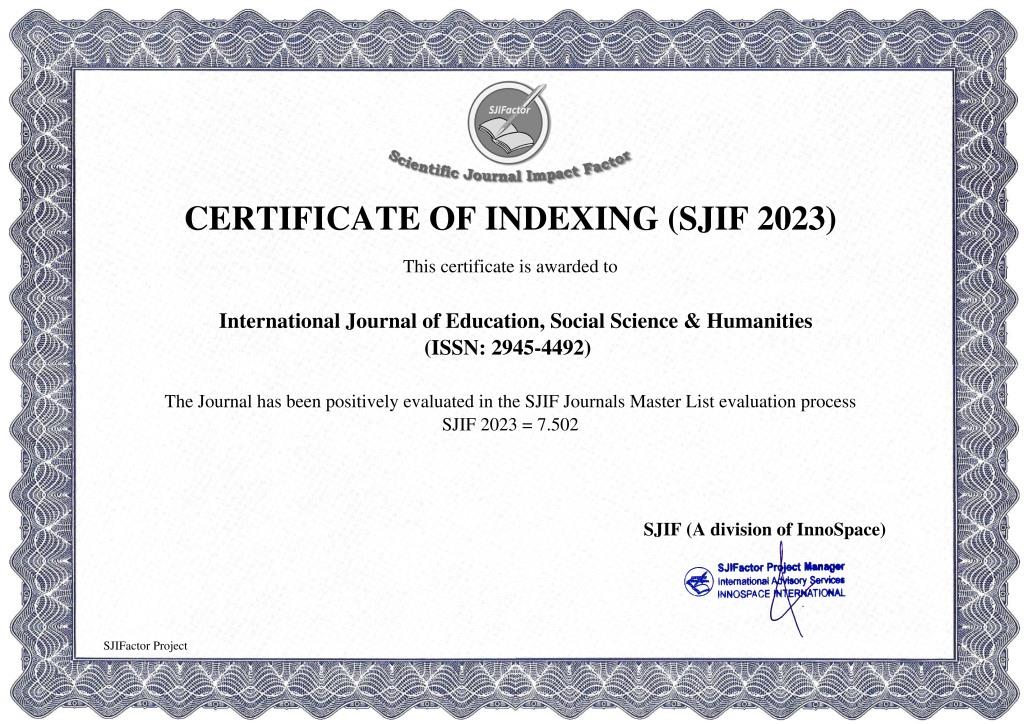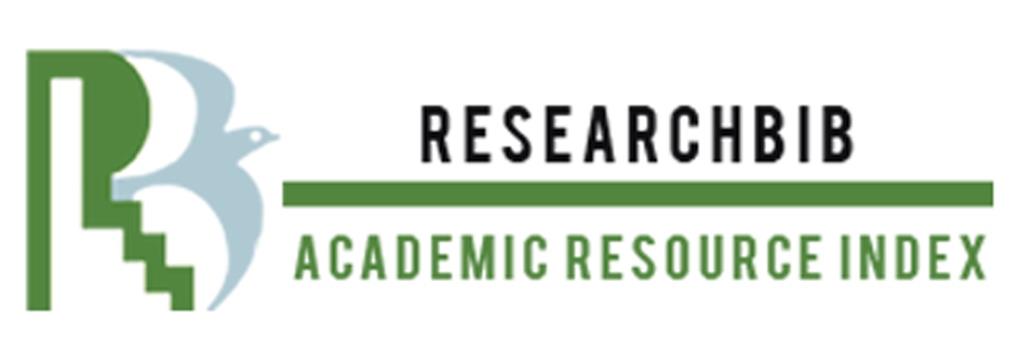HYPONYMIC RELATIONSHI IN WORDS IN SEMANTICS
Keywords:
Hyponymy, hyponymic relations, semantic field, gender and type, taxonomy and taxonomic structure.Abstract
This article describes the hyponymic taxonomy as an object of the study the semantics and its semantic features in English linguistics. In addition to this, some examples are given with explanations and their taxonomic analysis which is taken as an object of semantic layer. One of the most vital progresses in cognitive understanding of information and the extremely significant devices to classifying vocabulary and performing of the human perception.
References
Krongauz M.A.Semantics. –M., 2001: -С. 98.
Farris J.S. The meaning of relationship and taxonomic procedure. Systematic Zoology. Vol. 16. No.1. 1967. pp. 44-51. https://doi.org/10.2307/2411515.
Amsler R.A. A taxonomy for English nouns and verbs, in Proceedings of the 19th annual meeting on Association for Computational Linguistics. Standford, CA. 1981. pp. 133–138.
Hearst М.А. Automatic acquisition of hyponyms from large text corpora, in Proceedings of the 14th International Conference on Computational Linguistics. 1992. pp. 539–545.
Jackson, Joab, “Taxonomy’s not just design, it’s an art”. Government Computer news. Washingtong, D.C. September 2, 2004. Pp 98-99.
J. Djumabaeva, N. Sabirova. The study of hyponymic taxonomy in English linguistics and the lexical and semantic relations of hyponymy. Ilkogretim Online-Elementary Education Online 2020; 19(4):p. 874. Doi:10.17051/ilkonline.2020.04.195
N. K. Sabirova. N. K. Jumaeva. Hyponymic Taxonomy In Semantics. Central Asian Research Journal For Interdisciplinary Studies (CARJIS) ISSN (online): 2181-2454 Volume 2 | Issue 12 |December, 2022 | SJIF: 5,965 | UIF: 7,6 | ISRA: JIF 1.947 | Google Scholar | www.carjis.org DOI: 10.24412/2181-2454-2022-12-143-148 E-mail: carjisor@gmail.com.
Jumaeva, N. K. (2022). Lexical And Semantic Characteristics Of Hyponomic Relations And Deeply Analyzing Its Features In English Linguistucs. Academic Research in Educational Sciences, 3(4), 535–542.
Shorxametov, Shotillo Safarovich, and Tursuntosh Isroilova. "How to teach learners through didactic games." Academic research in educational sciences 3.12 (2022): 415-420.
Juan Carlos Gil Berrozpe. Corpus-Based Identification Of Hyponymy Subtypes And Knowledge Patterns In The Environmental Domain. 2017. Universidad De Granada. Pp-9-12
D.A. Cruse. Meaning in language: An introduction to semantics and pragmatics. New York: Oxford University Press. 2000. P 356
Lyons J. Semantics (2 vols) Cambridge University Press. 1977. P 293.
Murphy M.L. Hyponymy and hypernymy. Cambridge University Press. 2003.
Brachman, Ronald (October 1983). "What IS-A is and isn't. An Analysis of Taxonomic Links in Semantic Networks". IEEE Computer. 16 (10): 30–36. doi:10.1109/MC.1983.1654194. S2CID 16650410..
Alimjanova, L. X. (2022). NOFILOLOGIK TA’LIM YO ‘NALISHI TALABALARIGA INGLIZ TILINI O ‘QITISHDA CONTENT ASOSIDA O ‘QITISH TEXNOLOGIYALARIDAN FOYDALANISHNING NAZARIY VA METODOLOGIK ASOSLARI. Academic research in educational sciences, 3(5), 957-963
Eldorbek, K. (2023). ERRORS IN TRANSLATION OCCURRING DUE TO ASYMMETRIES IN THE TARGET AND SOURCE LANGUAGES. Finland International Scientific Journal of Education, Social Science & Humanities, 11(2), 289-292.
Tulyaganova Nargiza Farxod qizi, & Yusupova Shoira Batirovna. (2022). National Cultural Specificity of Speech Behavior in English and Uzbek. Eurasian Research Bulletin, 4, 80–82.
Khazratkulova, E. I. K. (2022). THE IMPORTANCE OF PSYCHOLINGUISTIC ASPECTS IN TEACHING ENGLISH. Oriental renaissance: Innovative, educational, natural and social sciences, 2(5-2), 194-197.














